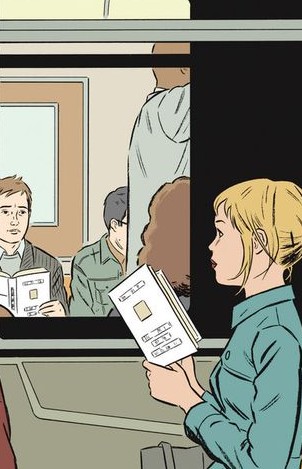Literacy Blogs
- All
- 3-cueing
- academic learning time
- academic vocabulary
- accommodations
- accountability testing
- Active View of Reading
- adolescent literacy
- afterschool programs
- alphabet
- amount of instruction
- amount of reading
- argument
- assessment
- auding
- author awareness
- automaticity
- balanced literacy
- beginning reading
- Book Buddies
- Book Flood
- challenging text
- classroom organization
- close reading
- coaching
- cohesion
- Common Core State Standards
- complex text
- comprehension strategies
- content area reading
- context analysis
- curriculum materials
- Daily 5
- decoding
- departmentalization
- DIBELS
- dictionary skills
- digital texts
- disciplinary literacy
- dyslexia
- early interventions
- effective teachers
- Emily Hanford
- executive function
- family literacy
- fingerpoint reading
- foundational skills
- graphic novels
- guided reading
- heterogeneous grouping of students
- homework
- improving reading achievement
- independent reading
- independent reading level
- informal reading inventories
- informational texts
- instructional level
- invented spelling
- jigsaw instruction
- knowledge
- leadership
- learning disabilities
- Lexiles
- linguistic comprehension
- listening comprehension
- literacy charities
- literacy policy
- literary interpretation
- main idea
- morphology
- motivation
- narrative text
- National Early Literacy Panel
- nonsense words
- oral language
- oral reading fluency
- paraphrasing
- Pause, Prompt, Praise (3P)
- personalized learning
- phonemes
- phonemic awareness
- phonics
- press and media
- principals
- prosody
- Readers' Workshop
- reading comprehension
- reading disabilities
- reading intervention
- reading levels
- reading models
- Reading Recovery
- reading research
- reading skills
- reading strategies
- reading to children
- reading wars
- reading-writing relations
- remedial reading
- rereading
- Response to Intervention
- Scarborough's Rope
- science of reading
- seatwork
- semantics
- sentence comprehension
- sequence of instruction
- set for consistency
- set for variability
- shared reading
- shared reading
- sight vocabulary
- simple view of reading
- Simple View of Reading
- small group instruction
- social studies
- sound walls
- Special Education
- speech-to-print phonics
- spelling
- stamina
- summarizing
- Sustained Silent Reading
- syllabication
- syntax
- syntax
- testing
- text complexity
- text interpretation
- text reading fluency
- text structure
- theme
- think-pair-share
- trauma
- visualization
- vocabulary
- word walls
- writing
- zone of proximal development (ZPD)
Does Research Support “Guided Reading?” Practical Advice on Directing Reading
Teacher question: One of the most important activities in my class is guided reading. Not the “Guided Reading” program (we use a textbook) but group work with the children reading under my guidance. Some of our teachers do this with the whole class. I think it works better the way I do it, with small reading groups. The students read the text and I ask questions and we talk about it. In my experience that is helpful. Is there any research supporting that?RELATED: Does Literature Count as Knowledge? Shanahan response: First, let’s set aside the term “guided reading.” It now appears to a be ...
The Instructional Level Concept Revisited: Teaching with Complex Text
Blast from the Past: This piece first posted on February 7, 2017, and was reposted on March 23, 2024. Nothing to change or update here, but given recent questions and discussions on social media, I think it would be worthwhile to revisit the topic. I’ve been beavering away at a book manuscript that will go into much greater detail on this topic, that I hope will be available to everyone in 2025. It won’t reach different conclusions either, even given new scholarship on the issue. Boy, oh, boy! The past couple weeks have brought unseasonably warm temperatures to the Midwest, and ...
Does Literature Count as Knowledge?
Teacher question: Our district and state are making a big push to develop social studies knowledge through reading. I appreciate that and understand the importance of social studies (previously we hardly taught it at all). Our ELA textbook still has stories – each of these is connected to social studies or science topics. We are being told that if time is tight (and it always is – we have so many things to teach now) that we can skip the stories and focus on the social studies selections alone. I always thought reading class was for literature and social studies was ...
Can a Program of Professional Development Raise Reading Achievement?
Principal Question: We are trying to do better in reading achievement – our school is second lowest in our district. I’m convinced structured reading is the way to go and I’m willing to use my budget to pay for our primary teachers to attend the XXXXX professional development program. I’ve heard that having teachers take that training is an effective way to improve reading achievement. However, several of my teachers say they don’t want to go, and I can’t require it. I know they respect your opinion, what do you think of that training?RELATED: Small Group Phonics in the Classroom – Good ...
Small Group Phonics in the Classroom – Good Idea or Not?
Teacher Question 1: Our district adopted a systematic phonics program and instruction is delivered whole class for each grade level for about 30 minutes per day. We have a wide range of learners in each class, so my question is, is whole class instruction an effective use of instructional time since some students are being exposed to phonics instruction beyond their level? For example, a second grader who still hasn’t mastered CVC words, but is focused on whole class instruction focused on CVCe words. Is there any research to substantiate that exposure to explicit phonics instruction beyond their current level of mastery is going to be ...
Should we grade students on the individual reading standards?
Blast from the Past: This entry first posted on September 7, 2019, and reappeared on February 10, 2024. It seems to be that time of the year again. Principals are being encouraged by central administrations to put on the full court press for higher test scores this year. I know that, not because of Mardi Gras or Groundhog Day, but because I'm starting to get those questions from teachers. Here is one that just came in: "Dr. Shanahan, you have stated that STANDARDIZED reading test items analysis is a 'fool's errand.' My district requires me to complete an items analysis ...
I want my students to comprehend, am I teaching the wrong kind of strategies?
I’m reading a book about Herman Melville and Lewis Mumford (one of Melville’s autobiographers). Last night, before sleep, I read about 20 pages. The author alternates chapters – one on Melville, then one on Mumford. I didn’t get the organization immediately, but whatever is revealed about one author will be implicated in what will be divulged about the other, though the connection isn’t always explicit. Last night’s pair was about how these very despondent men each managed to find someone who would connect deeply with them emotionally and intellectually, despite the depths of their negativity. That sounds like I was comprehending what ...
Blast from the Past: How Can We Take Advantage of the Reading-Writing Relationship?
This blog first appeared on February 22, 2020. It has been a while since I have written about how writing instruction can boost reading achievement. When I first started writing about that (almost 50 years ago), it was virtually an unknown topic. These days, most teachers tell me that they agree that writing can improve reading, though they don’t seem to have much understanding of the concept and quite often they skip the writing because of pressures to get higher reading scores. So it goes. Given recent experiences with such conversations, I thought it would be a good time to ...
What Does Brain Science Have To Say About Teaching Reading? Does It Matter?
Teacher question: I am the principal of a small primary grade school (350 students). I want to hire a consultant/ professional development specialist who could school my faculty in brain science so they will be able to teach reading more effectively. We all earned our credentials in colleges of education so none of us knows these new brain-based methods of teaching reading. Could you please provide some guidance?RELATED: Does the science of reading include middle school? Shanahan responds: It may be hard to believe given news media reports and the numerous books that now purport to translate neuroscience into pedagogy, but there are not ...
Does the science of reading include middle school?
Teacher Question: We have been working on strengthening and refining our early literacy instruction to be in line with the science. This has me wondering about the middle level. What does the science prioritize for middle level ELA instruction? Is there a point when teaching into a phonics gap for students does not have a payoff? With limited time in a middle school classroom, I am thinking about what needs to be prioritized. Some parents are wondering if phonics instruction should continue into middle school. This may need to happen for some students, but I imagine that Tier 1 instruction would focus on higher levels ...









